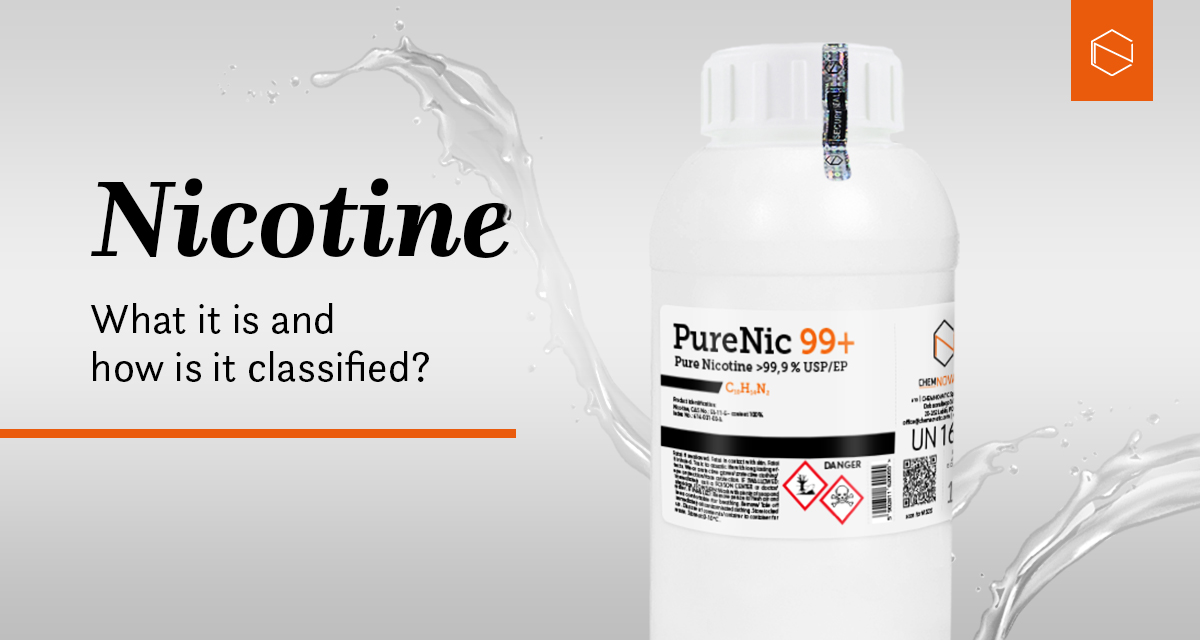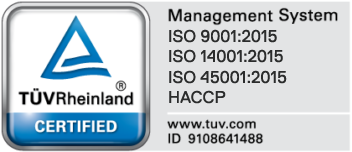What is nicotine, what is its history and what is its chemical classification? Check out the key information that will help you understand it better and use it in the production of e-liquids and other smoking alternatives.
Learn more:
- OEM Services And Private & White Label: 9 Reasons To Choose Chemnovatic As The Best Business Partner
- From Leaves To Labs: A Brief Story About Nicotine’s Production
- Hard To Handle, Easy To Vape: How To Work With Nicotine Safely?
- Synthetic Nicotine vs. Tobacco Nicotine
- What Are E-Liquids? History And Business Opportunities
- Natural Vaping Products: Bases, Nicotine, Flavorings
- How To Start And Grow E-Liquid Brand?
- Pharmaceutical Quality Of E-Liquids: What You Should Know?
Nicotine: What Is It?
Nicotine is a colorless, odorless, and oily substance obtained from tobacco leaves via water vapor distillation in an alkaline environment and Ether Extraction or via Supercritical Extraction. It is mainly used in the tobacco industry but also can be found in smoking cessation products, such as nicotine bases or electronic cigarette e-liquids. It is also an ingredient in some pesticides.
A short history of nicotine
In the 16th century, French doctor Jean Nicot prescribed tobacco as a medication to his patients and it is his name that gave name to Nicotine.
In the 1828 Nicotine has been isolated for the first time, in 1843 its chemical composition was recognized and it was first time synthesized in 1904.
Check also:
- From Leaves To Labs: A Brief Story About Nicotine’s Production
- Hard To Handle, Easy To Vape: How To Work With Nicotine Safely?
- Synthetic Nicotine vs. Tobacco Nicotine
Nicotine: chemical classification
Basic Nicotine information:
- Name: nicotine (ISO); 3-[(2S)-1-methylpyrrolidin-2-yl]pyridine
- EC Number: 200-193-3
- CAS Number: 54-11-5
- CLP Annex VI Index Number: 614-001-00-4
- CN Code: 2939 99 00
Nicotine: Law And Regulations
Nicotine classification as a hazardous substance is regulated in the European Union by the CLP Regulation 1272/2008 of 16th December 2008 regarding the classification, labeling and packaging of substances and mixtures. CLP Regulation 1272/2008 overrides previous directives 67/548/EWG and 1999/45/WE and changes (WE) nr 1907/2006.
According to the Annex VI of CLP Regulation, pure Nicotine has received the following GHS Hazard Statements:
- Acute Tox. 1, H310 (Fatal in contact with skin)
- Acute Tox. 3, H301 (Toxic if swallowed)
- Aquatic Chronic 2, H411 (Toxic to aquatic life with long lasting effects)
Because of these regulations, pure Nicotine should only be used by experienced companies, experts in their field.
Check also:
- E-Liquid Manufacturing Standards: Tips For Producers And Brand Owners
- E-Liquid Manufacturers: Best Practices
- Packaging, Storing And Transport: Why Are They Important For Product’s Quality?
- Storing And Handling Pure Nicotine And Nicotine Salts
- Safe Usage Of Chemicals [Guide]
If you want to know more about safe handling, familiarise yourself with our Safety Data Sheet for pure Nicotine (a sample safety data sheet for PureNic 99+).
Learn more:
- E-Liquid Regulations In The World
- Tobacco Product Directive (TPD): All You Need To Know
- Industry Regulations: REACH And CLP
- Fees, Taxes And More: An Analysis Of Selected Regulations In Europe
- What Is CLP?
- What Is UFI Code And How Does It Apply To The E-Liquid Industry?
- REACH: What Is Reach And Why We Talk About It?
- E-Liquid Regulations Guide: [Get Your Free E-Book]
Any doubts, questions? Or maybe business cooperation?
We have been in the vape and e-liquid sector since 2013. Dozens of clients have trusted us and we have launched over 200 products and brands. Use our resources and experience and together we will earn your success.
Contact us at: sales@chemnovatic.com and let’s talk about your challenges and numbers!
Let’s grow your business together!
Subscribe to our newsletter and receive a free access to our e-mail course on raw materials for e-liquids production (and more!).
No spam, only valuable content we promise to send you.


















